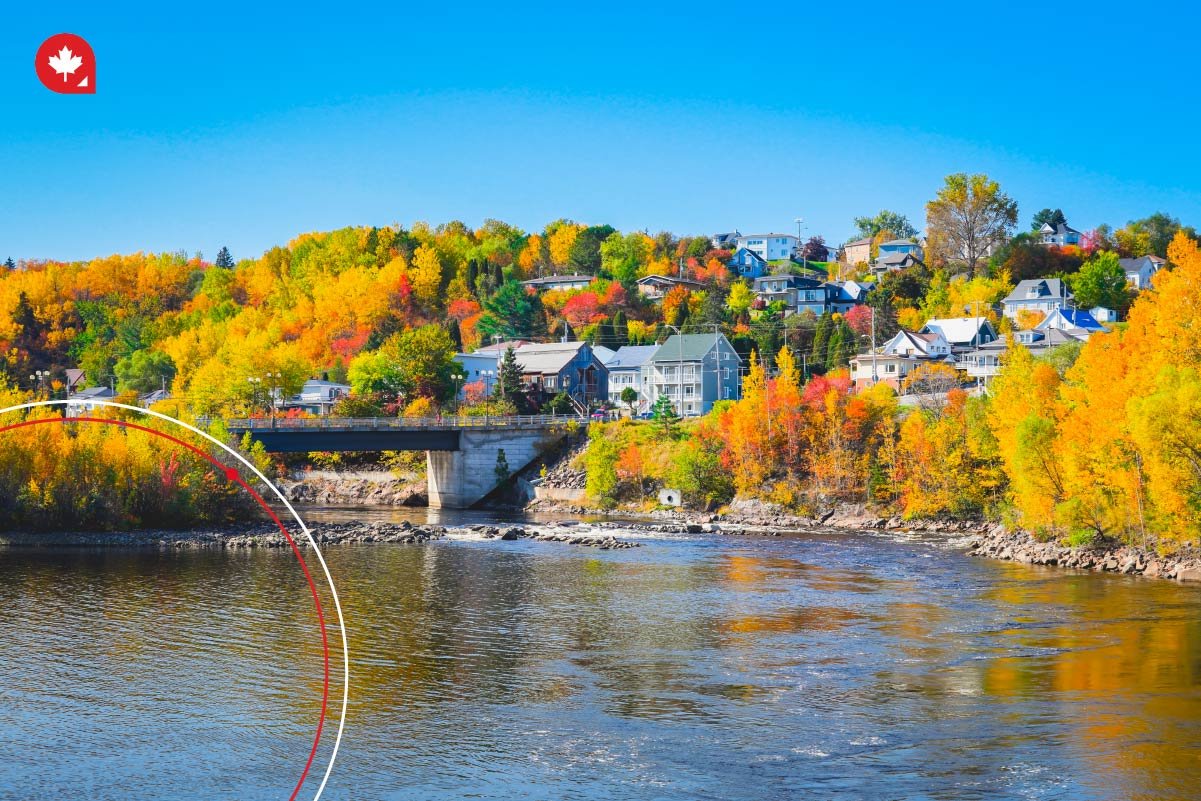Considering a move to Canada? Do you prefer a life away from the hustle and bustle of the city? Then, the Rural and Northern Immigration Pilot (RNIP) might be your perfect path. This program offers skilled immigrants a chance to live, work, and settle in smaller Canadian communities while helping those communities address labor shortages. The FAQs below answer everything you need to know about the RNIP.
What is the Rural and Northern Immigration Pilot (RNIP)?

The RNIP is a unique immigration program designed to address two key challenges in Canada: attracting skilled immigrants and revitalizing smaller communities. Below is a breakdown of its core aspects.
A Community-Driven Program
Unlike traditional immigration programs, the RNIP is driven by the needs and priorities of participating communities. These communities, typically with populations under 50,000 and located away from major cities, often face issues like:
- Aging populations - A decline in young working-age adults can lead to labor shortages and strain on social services.
- Labor shortages - Businesses struggle to find qualified workers to fill essential positions, hindering economic growth.
Attracting Skilled Immigrants
The RNIP aims to bridge this gap by offering a pathway to Canadian permanent residency for skilled immigrants. These immigrants bring:
- Valuable Skills and Experience - They can fill job vacancies in various sectors like healthcare, skilled trades, and education.
- Fresh Perspectives and Ideas - Newcomers who move to Canada can contribute to the community's dynamism and innovation.
Pathway to Permanent Residency
The RNIP provides a clear path for skilled workers to gain Canadian permanent residency in Canada. This allows them to build a life, raise a family, and contribute long-term to their chosen community.
This offers a win-win situation for immigrants and participating communities. Immigrants gain access to a welcoming community and a path to Canadian immigration, while communities benefit from a skilled workforce and renewed economic and social growth.
What Are the Key Dates to Remember For This Program?
The critical dates for the RINP are as follows: July 31, 2024 marks the deadline for communities to recommend candidates, while August 31, 2024 serves as the deadline for candidates to submit their Canadian permanent residency application. These dates are pivotal in the process and require timely action from both communities and candidates participating in the program.
What Are the Eligibility Requirements For the RNIP?
The RNIP has a few requirements to ensure you're a good fit for the program and the participating community when you immigrate to Canada. These may be regarding your language proficiency, Canadian education, settlement funds, or commitment to the rural community in which you want to live in. Here's what you'll need:
| Eligibility Requirements For the RNIP | Description |
|---|---|
| Skills or Canadian Education | You'll need to demonstrate either relevant work experience in your field or graduation from a public college or university within the community recommending you. |
| Language Proficiency | Show that you can communicate effectively in English or French by meeting the program's language requirements. |
| Education Credentials | Have your educational background assessed to meet Canadian standards through an Educational Credential Assessment (ECA). |
| Settlement Funds | Be prepared to demonstrate you have sufficient financial resources to support yourself and any dependents upon arrival in Canada. |
| Community Commitment | Express a genuine intention to live and establish yourself in the recommending community. |
| Community Fit | Meet any additional requirements set by the specific community you're interested in. These might be related to your field of work or experience they deem valuable. |
| Temporary Residency Status (if applicable) | If you're already in Canada, you must have temporary resident status to apply through the RNIP. |
By meeting these requirements, you can position yourself for a successful application and contribute to the community's growth.
What is Considered to be an Eligible Job in the RNIP?
The job you're being offered must adhere to the following criteria:
- It must be situated within the community.
- The employer must maintain their business operations within the community.
- The position should be full-time, requiring at least 30 paid hours per week.
- It should be non-seasonal, indicating consistent year-round employment.
- The employment should be permanent, lacking a predetermined end date.
- The wage offered must meet or surpass the minimum wage stipulated by the Job Bank for your job's National Occupational Classification (NOC).
What's Not Allowed With Job Offers
Your experience should demonstrate your ability to fulfill the duties outlined in the job offer. On the flip side, there are certain types of employers and businesses from which the job offer cannot originate. These include:
- Consulates
- Staffing or employment agencies
- Businesses owned or controlled by you, your spouse, or common-law partner, including those in which you hold a majority stake (more than 50% ownership), either directly or indirectly.
- Employers outlined in paragraphs 200(3)(g.1) and (h) of the Immigration and Refugee Protection Regulations, such as businesses involved in adult services or erotic massage regularly or those issuing non-genuine employment offers and facing administrative penalties.
What Are the In-demand Jobs Within the Participating Communities?
Canada has hundreds of thousands of vacancies across sectors. Below are just some of the in-demand jobs in the provinces where participating RNIP communities are based.
Ontario
| Ontario In-demand Jobs | NOC Code |
|---|---|
| Registered Nurse | NOC 31301 |
| Physician – Family | NOC 31102 |
| Software Engineer | NOC 21231 |
| Heavy Equipment Operator | NOC 73400 |
| Cook | NOC 63200 |
| Transport Truck Driver | NOC 73300 |
British Columbia
| British Columbia In-demand Jobs | NOC Code |
|---|---|
| Construction Manager | NOC 70010 |
| Mechanical Engineer | NOC 21301 |
| Software Engineer | NOC 21231 |
| Transport Truck Driver | NOC 73300 |
| Social Worker | NOC 41300 |
| Registered Nurse | NOC 31301 |
Manitoba
| Manitoba In-demand Jobs | NOC Code |
|---|---|
| Registered Nurse | NOC 31301 |
| Physician | NOC 31102 |
| Teacher | NOC 41220 |
| Customer Service Representative | NOC 64409 |
| Electrician | NOC 72200 |
| Agriculture Laborer | NOC 85100 |
Alberta
| Alberta In-demand Jobs | NOC Code |
|---|---|
| Psychiatric Nurse | NOC 31301 |
| Food and Beverage Server | NOC 65200 |
| Cook | NOC 63200 |
| Human Resources Manager | NOC 10011 |
| Information Systems Analyst | NOC 21222 |
| Transport Truck Driver | NOC 73300 |
What Are the Language Requirements For This Program?
To be eligible for the RNIP and Canadian immigration, you must meet the minimum language requirements that align with the NOC category for your job offer in your RNIP community. It can be either:
- The Canadian Language Benchmarks (CLB) or
- Niveaux de compétence linguistique canadiens (NCLC)
The minimum language requirements for each NOC category are as follows:
- TEER 0 and 1: CLB/NCLC 6
- TEER 2 and 3: CLB/NCLC 5
- TEER 4 and 5: CLB/NCLC 4
You must submit your language test results from a designated language test taken less than two years ago.
What Are the Educational Requirements For this Program?
The RNIP requires you to demonstrate that your educational background meets Canadian standards with an ECA. Here's a closer look at these requirements:
- Canadian High School Diploma or Equivalent: You'll need to have a credential that signifies completion of secondary education. This could be a Canadian high school diploma or a foreign credential deemed equivalent.
- Educational Credential Assessment (ECA): Since your foreign credential may not directly translate to the Canadian system, you'll need to have it assessed by an authorized organization. This process verifies the authenticity and equivalency of your foreign education to a Canadian high school diploma.
- Authorized Organizations: Organizations like World Education Services (WES) or the Canadian Information Centre for International Credentials (CICIC) are authorized to provide ECA reports.
How to Apply For an ECA
Applying for an ECA is simple. Below are the steps you need to follow.
Step 1: Gather Documents
You'll need transcripts, diplomas, and any other relevant documents from your secondary education institution.
Step 2: Choose an Organization
Select a recognized organization offering ECA services.
Step 3: Apply and Pay Fees
Submit your documents and pay the required processing fee to the chosen organization.
Step 4: Wait For Your ECA
The organization will evaluate your credentials to determine equivalency. If successful, you'll receive an ECA report verifying that your foreign credential is equivalent to a Canadian high school diploma.
What Are Settlement Funds?
Settlement funds are the recommended minimum amount of money you need to support yourself and your loved ones when you immigrate to Canada. Being able to prove that you have sufficient funds to support yourself is essential when it comes to your application for Canadian Permanent Residency.
The RNIP recognizes the importance of having sufficient financial resources to settle comfortably in your new Canadian community. This requirement ensures you can cover your basic needs and integrate smoothly without financial strain.
Who Needs to Show Proof of Funds?
Generally, applicants must demonstrate they have enough money to support themselves and any dependents upon arrival.
If you work legally in Canada with a valid work permit, you're exempt from this requirement.
Why Can't You Borrow Funds?
The program aims to ensure your financial stability. Borrowed funds might not be readily available when needed, so you must demonstrate access to your resources.
What are Acceptable Forms of Proof?
The RNIP emphasizes a smooth transition for newcomers. To ensure you have the resources for a successful start in Canada, you'll need to demonstrate sufficient settlement funds with the following:
- Bank Account Statements
- Banker's Drafts
- Cheques
- Traveler's Cheques
- Money Orders
Combining Finances with a Spouse
If your spouse is immigrating with you, you can combine funds held in a joint bank account. In some cases, funds in your spouse's account might be considered, but you'll need to prove you have legal access to those resources.
How do I Get a Recommendation From a Participating Community?

To apply to a participating community, you must:
- Provide proof that you can meet all the RNIP requirements
- Have an eligible offer of employment
Participating RINP Communities
There are currently 11 communities operating within the Rural and Northern Immigration Pilot program. They are:
- North Bay, ON
- Sudbury, ON
- Timmins, ON
- Sault Ste. Marie, ON
- Thunder Bay, ON
- Brandon, MB
- Moose Jaw, SK
- West Kootenay (Trail, Castlegar, Rossland, Nelson), BC
- Claresholm, AB
- Vernon, BC
At Which Point Can I Apply For Canadian Permanent Residency?
You may apply for Canadian Permanent Residency once a community gives you a recommendation. Remember, if you wish to apply for permanent residence in Canada, you must ensure you're eligible. Follow the IRCC application guides to ensure that your applications are accurately completed. Then, send in your application online.
Which Documents Do I Need to Complete When I Apply for Canadian Permanent Residency Via the RNIP?
RNIP application processes may vary from person to person, according to country of origin.
You will need to complete the following documents:
- An Offer of Employment to a Foreign National - RNIP IMM 5984
- Forms for the Economic Development Organization of the particular community
- Recommendation from the designated Economic Development Organization - RNIP IMM 0112
- Applicant Forms - IMM 008; IMM 5669; IMM 5884; IMM 5911; IMM 5406; IMM 5562; IMM 5604; IMM 5409; IMM 5476
What Should Students Applying to the RNIP Know?
International students who meet all the following criteria can be exempt from the work experience requirement.
Graduate of a Qualifying Program
You must have graduated from one of the following types of post-secondary programs:
- Two Years or More: The program duration must be a minimum of two years (you cannot combine shorter programs to meet this requirement).
- Full-time Studies: You must have been a full-time student throughout the program.
- Recent Graduate: Your graduation must have occurred within 18 months of applying for permanent residency.
You must have resided in the recommending community for at least 16 of the 24 months leading up to your program completion.
Alternative Pathway: Master's Degree or Higher
Alternatively, international students with a Master's degree or a higher level qualification (even if shorter than two years) can be exempt if they meet these conditions:
- Full-time Studies: You must have completed your degree program as a full-time student.
- Recent Graduate: Similar to the previous option, your graduation must have taken place within the past 18 months of your permanent residency application.
You must have resided in the community throughout your studies.
Important Exclusions
A few program types exclude international students from this exemption, regardless of other criteria. These include:
- Language-Focused Programs: Programs where more than half the curriculum focuses on English or French language studies are not eligible.
- Distance Learning Programs: Programs delivered primarily through distance learning are also excluded.
- Return-of-Service Scholarships: If your scholarship or fellowship requires you to return to your home country after graduation to utilize your learnings, you wouldn't be eligible for this pathway.
How Long Does it Take to Process an RNIP Application?
IRCC starts processing your application as soon as they receive your Biometrics, we start processing your application. The average processing time for permanent residency applications under the RNIP is between 12 to 18 months long.
What Happens if My Application is Refused?
If your application is rejected, the IRCC will provide you with a letter explaining the outcome.
Do I Need to Submit Biometrics For an RNIP?

Yes, you will be required to submit Biometrics. Applicants between 14 and 79 years old must provide fingerprints and a photo (Biometrics) for every Canadian Permanent Residency application for permanent residence - even if you have done so in the past.
To avoid delays, biometrics fees must be paid when you submit your application. You are advised to tick this task off your list immediately once the IRCC requests it. Note that you will have 30 days from the date on the letter to do so.
Do I Need to Get a Canadian Work Permit?
A Canadian work permit, in this case, is optional. If you have applied for permanent residence through the Rural and Northern Immigration Pilot, you may also be eligible for a one-year Canadian work permit. This will allow you to work for one year while your application for permanent residency is being processed.
You'll need to qualify for the following to apply for the work visa:
- An offer of employment from your employer
- A recommendation from a participating community
- An acknowledgement of receipt letter from the IRCC




